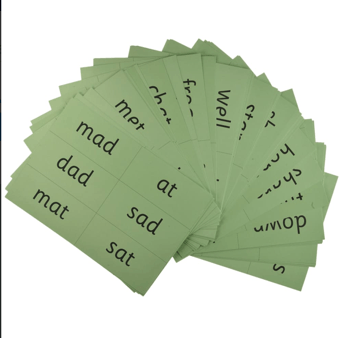Phonics
At Castleton, we use the Read Write Inc Phonics Speed Sounds principles and resources to teach our children to read. The sounds and resources, such as Speed Sounds Cards and Green Word Cards, have been reorganised and supplemented to follow the order of “Letters and Sounds”.
By doing this, our phonics scheme is in complete alignment with our reading scheme (see below) and ensures that every part of the National Curriculum is covered. “Letters and Sounds” is taught in phases.
Phase 1 (taught in Nursery and Reception)-this phase supports children’s developing speaking and listening skills and linking of sounds and letters. These activities are divided into seven groups: environmental sounds, instrumental sounds, body sounds, rhyme and rhythm, alliteration, voice sounds, oral blending and segmenting. The focus is on listening to and repeating sounds.
In Nursery, the children are introduced to the pictures that represent the sounds to prepare them for their next stage of learning when they reach Reception.
Phase 2 (taught in first term of Reception)-this phase introduces simple letter-sound correspondences in sets, using the RWI resources and accompanying rhymes, e.g. d-d-d-dinosaur. As the sets are introduced, children are encouraged to use their new knowledge to sound out and blend words, e.g. s-a-t to make sat. They learn which sounds are “bouncy” e.g. c and which sounds are “stretchy” e.g. m, which will help them to blend more easily for reading. Using “dots” and “dashes” on the Green Word Cards help children to segment the sounds. They also learn tricky words that do not sound how they look, e.g. the, I, go
Click on the link below to find out more about how to support your child to blend sounds to read words.
Phase 3- (taught in Reception)-this phase builds on the letter-sound correspondences learnt in Phase Two, with the children learning consonant digraphs , e.g. ch, sh, th and long vowel sounds, ai, ee, igh. They continue to learn more tricky words that sound different from how they look, e.g. all, they, you
Phase 4 (taught in Reception)-this phase teaches children to read words with adjacent consonants, e.g. milk, kept. At Castleton, we incorporate the elements of Phase 4 into Phases 2 and 3 to help the children make more rapid progress. Our Phonics Sequence has carefully organised and included resources to reflect this. We also supplement the sequence with multisyllabic words, e.g. sandpit, rooftop to extend children’s decoding skills.
Phase 5 (taught in Year One)-this phase teaches children new graphemes for reading, as well as alternative pronunciations, e.g. ow in cow, ow in blow. They also learn that there are alternative spellings for sounds they know, e.g. igh is used to spell night, but can also be spelt with ie (pie), y (fly), i_e (bike). They continue to extend the range of tricky words they can read automatically.
Phase 6 (Year Two)-In this phase, children read with increasing fluency and are able to read familiar words without the need to sound out and blend. They also work on spelling, including prefixes and suffixes, e.g. unhappy, helpful, as well as doubling and dropping letters, e.g. hoping, skipping.
Click on the link below to find out more about Letters and Sounds and the phases.
https://home.oxfordowl.co.uk/reading/what-is-letters-and-sounds/
In our recent reading monitoring visit, feedback stated that;
“this well-oiled responsive approach” and “tight structure has worked so well that the impact evidence was visible very quickly.”
(June 2021)
Useful Website Links
Please click on the image below to take you to a useful phonics resource!











